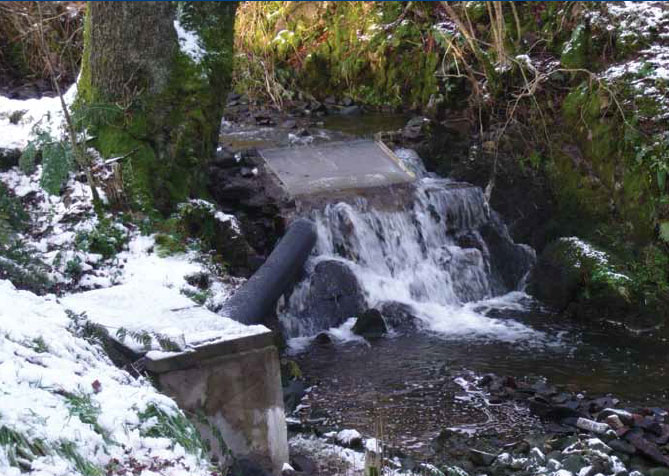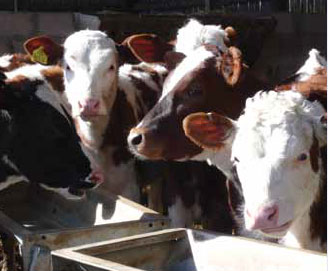Agri-renewables strategy for Scotland
This strategy shows how agri-renewables can contribute to the aim of building a cleaner, greener Scotland.
Chapter 3
Scotland's Energy Targets
3.1 The Routemap for Renewable Energy in Scotland defines clear targets for meeting Scotland's energy need for electricity, heat and transport from renewable sources by 2020. Our Energy Efficiency Action Plan sets out the direction for Scotland's energy efficiency policy in the years taking us up to 2020.
These targets are:
- At least 30% overall energy demand from renewables by 2020
- 100% electricity demand equivalent from renewables by 2020
- 11% heat demand to be met from renewables by 2020
- A reduction in end use energy consumption of 12% by 2020 (on 2005-2007 baseline)
- 500 MW community and locally owned renewable energy by 2020
3.2 Agri-renewables are encompassed in the target for local and community ownership of 500 MW by 2020. Scottish Ministers are determined to see the benefits from our indigenous energy resources flow through to the people of Scotland. In particular there is an opportunity for a transformation in the level of local ownership of energy.
3.3 This level of energy generation in community hands can make a significant contribution both to energy security and the achievement of our renewable electricity and heat targets. The scale of potential local benefit is unprecedented and such revenue streams could play an important part in developing wider community asset ownership - which is a priority for the Scottish Government.
3.4 We are now also setting the benchmark for rates of community benefit offered in commercial schemes through our expectations of commercial developments on the public estate.
Policy: Electricity Market Reform
The Scottish Government continues to work with the UK Government on Electricity Market Reform ( EMR) as proposed in the UK Energy Bill and in changes to the relationship between governments and the UK energy regulator Ofgem contained in the UK Energy Bill.
We have also made it clear to the UK Government that Scottish Ministers should have a statutory role in the accountability and governance arrangements of the System Operator (National Grid).
EMR is fundamental to the energy sector, both for Scotland and for the rest of the UK. EMR should work for those investing in Scotland, delivering our full energy potential and maintaining the significant and tangible industry, investor and developer confidence that we have worked hard to establish.
Further details are available on the Scottish Government EMR webpages.

Skills and Advice: Energy Efficiency
Farm Energy Auditing
Practical advice on carrying out a farm energy and fuel audit and developing an action plan is available on the Farming For a Better Climate website. This aims to ensure that farm equipment, vehicles and buildings are using energy and fuel as efficiently as possible in order to reduce greenhouse gas emissions and provide cost savings for farm businesses. Advice on zero and low cost options that can be implemented immediately and bring about noticeable savings is also available.
Resource Efficient Scotland
Advice and support in relation to energy and water efficiency, as well as waste, is available to farmers and agricultural businesses through the Scottish Government funded Resource Efficient Scotland programme. Resource efficiency and energy audits provided through the programme are only available for diversified activities of a farm operation, such as processing activities for retail ready produce, as well as farm shops and cafés and farm visitor centres.
Energy Saving Trust: Business Loans
The Energy Saving Trust provides, on behalf of the Scottish Government, loans of £1,000-£100,000 to small and medium enterprises ( SMEs) to install renewable energy technologies or fund measures that reduce energy and resource consumption. These loans are currently provided at 5% and 0% interest respectively. Please visit the Energy Saving Trust website for more details.
Energy Saving Trust: Green Deal and Network for Green Business
The Energy Saving Trust also provide advice on non-domestic Green Deal for farmers and the agricultural sector through their advice centres. In addition, the Energy Saving Trust operate a Network for Green Businesses in which farm businesses are participating. Through this scheme they help build confidence in new technologies by sharing experience between organisations which have already installed measures and those potentially interested in doing similar. Farmers and other agricultural businesses can access case studies and potentially visit organisations on this network.
As with all programmes, we have to ensure that state aid requirements are met. In this respect, small business loans for renewables are interest bearing and so are not regarded as state aid. The interest foregone on any interest free loans for related energy efficiency measures would however be regarded as state aid. Any assistance provided through Resource Efficient Scotland is subject to state aid restrictions. Please refer to the Scottish Government web pages on Agricultural State Aid and de minimis for further information.
Energy Efficiency Case Study: Dairy Sector
Dairy farms today face challenges fuelled by rapidly rising energy costs and concerns about environmental impacts. Dairy farms are significant users of energy, which is used in the milking process, for cooling and storing milk, heating water, lighting and ventilation.
Scottish dairy farms have changed noticeably over the past 20 years with a move towards larger farms with bigger herds. This change presents an opportunity to improve energy efficiency by changing management practices and investing in new technology. There are many different options that can be considered; monitoring and recording energy use is a good starting point, identifying scope for energy savings and highlighting efficiency measures. It is also helpful to benchmark energy use against similar businesses to see how the farm compares.
There are a range of cost effective measures that can be considered within the dairy, including using energy efficient lighting, insulating water tanks and pipes, utilising heat from milk cooling, improving plate cooler function and installing a variable speed drive. Often it can be a number of smaller things that can add up to a large saving on energy use, especially if these tasks are carried out on a daily basis.
Ross Paton, Organic Dairy Farmer, near Castle Douglas
After benchmarking energy use in the dairy, Ross Paton identified a number of ways to reduce electricity use. One of the measures, retrofitting a variable speed drive to the vacuum pump on the dairy, could save around £5,500 over 10 years based on current energy prices.
Alistair Marshall, Dairy farmer, near Dumfries
Looking at current equipment in the dairy, Alistair Marshall identified some practical ideas for cutting energy use. For example, improving the plate cooler function by 5°C could lead to energy savings of around £600 per year. A 50°C heat uplift through installing a heat recovery unit could save around £800 per year.

Contact
There is a problem
Thanks for your feedback